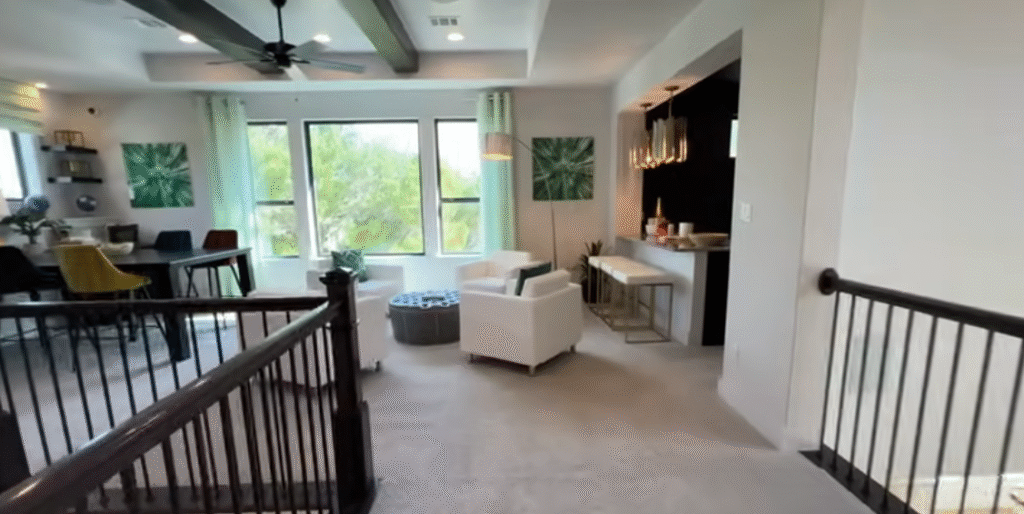In the American Heartland, balance and value—rather than luxury or excess—define the true cost of a good life. A comfortable lifestyle is not an impossible dream in the central United States, where the horizon seems to go on forever. It’s a quantifiable possibility, made more accessible by extraordinarily efficient cost dynamics that influence everything from healthcare to housing.
The most important factor is still housing, which is frequently the foundation of financial stability. Families can buy large homes in places like Des Moines, Omaha, or Tulsa for less than the cost of a studio apartment on the coast. In contrast, a six-figure salary in places like Los Angeles or New York might not be enough to cover the median income in the Heartland. For young families and retirees looking for a slower pace without compromising comfort, this affordability is especially advantageous.
Quality, rather than just price, is what makes this equation particularly intriguing. Groceries, transportation, and utilities are consistently much lower than the national average, according to the C2ER Cost of Living Index. Residents do, however, frequently benefit from surprisingly high levels of education, cultural amenities, and public services. The infrastructure works—quietly, effectively, and reliably—even though it doesn’t always sparkle. It is a subtly prosperous ecosystem.
The region’s cost advantage is found in its structural equilibrium, according to economist Ross DeVol, whose Heartland Forward studies have influenced conversations about economic opportunity. With a strong foundation in manufacturing, healthcare, and education, the Heartland’s economy provides stable jobs without the sharp swings found elsewhere. It keeps a very strong basis for middle-class living by prioritizing useful innovation over ostentatious expansion.
Profile – Ross DeVol, Economist & Heartland Research Lead
| Category | Details |
|---|---|
| Name | Ross DeVol |
| Title | President & CEO, Heartland Forward |
| Profession | Economist and Policy Researcher |
| Known For | Authoring reports on opportunity occupations and the American Heartland |
| Key Quote | “A dollar goes farther in the Heartland” |
| Reference | https://heartlandforward.org |

However, a more complex narrative that combines emotion and economics is developing. Relocating to the Heartland is an act of regaining agency for many Americans, not just a financial choice. It’s a return to a human-feeling pace of life, where community takes the place of rivalry and time is money. A young engineer from Chicago called his relocation to Kansas City “the best trade I ever made,” stating that the opportunity to spend more time with his family and pursue passion projects was made possible by the reduction in expenses. His experience is remarkably similar to that of thousands of others who are trying to find a long-term balance between affordability and ambition.
The region’s distinct appeal is defined by this sense of balance. The lifetime cost of realizing the American Dream—a home, children, education, and retirement—is estimated by economists to have surpassed $5 million nationwide over the last ten years. However, because their basic expenses are lower, that number is significantly improved for many Heartland residents, frequently by hundreds of thousands. More savings, less debt, and more time to enjoy life instead of just work are the concrete results of the math.
This migration trend has been exacerbated by cultural changes. Professionals from expensive cities are finding that they can maintain their urban incomes while residing in areas with half as high costs as they did in the past as remote work becomes more commonplace. In Missouri, a software developer making $100,000 in San Francisco might be able to live comfortably on $55,000. This change has been especially creative in reshaping population trends, drawing fresh ideas and vitality to smaller cities that were previously dismissed as “flyover.”
This dynamic is reinforced by the Heartland’s social fabric. Because neighbors know one another and there is more civic engagement, community continues to be a fundamental aspect of daily life. Social stability is anchored by small businesses, local schools, and churches. The Heartland is a very dependable place to raise a family and establish lasting roots because of these intangible but incredibly valuable factors. It’s more emotionally rich in addition to being less expensive.
But no region is immune to difficulties. Some regions have seen slower wage growth, and efforts to diversify the economy are still ongoing. Although housing is reasonably priced, urban and rural areas may have very different access to healthcare and education. However, new investments in broadband, nearby universities, and small-scale entrepreneurship initiatives are actively addressing these gaps. In order to ensure that affordability and opportunity are balanced, groups like Heartland Forward are enabling smaller cities to draw in tech startups and contemporary industries through strategic partnerships.

